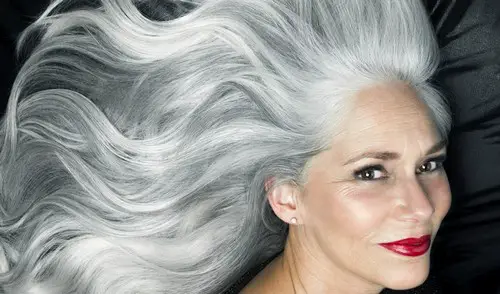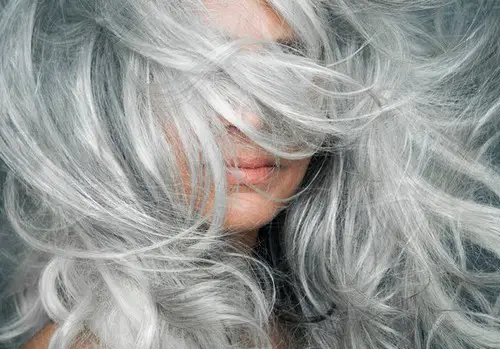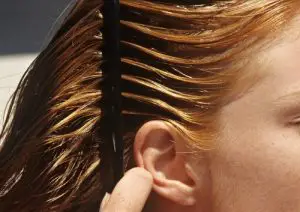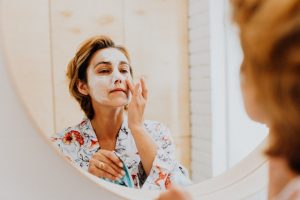While most people wonder why their hair is turning white, you ask yourself the question: I am 40 years old and no white hair, why? At first, we will see the origins of whitening hair. Then in a second part we will see why you have a total absence of gray hair at 40.
In this section:
Why does hair turn white?

The phenomenon of canities
Before finding out why you don't have gray hair at 40, it's helpful to simply review the process of canities to understand the mechanisms involved. White hair almost everyone ends up seeing it appear on their head, it is inevitable. This process is called canities. It is a natural mechanism that is triggered when the melanocytes, the cells which are responsible for the color of the hair, decrease or stop their production of melanin. In other words, your hair continues to grow, but without pigmentation and therefore without coloring. Your hair will then gradually turn white.
The arrival of the first gray hairs is around 35 years old for Europeans and can differ by more or less 10 years. This data is of course an average, the individual reality is quite different. The appearance of white hair varies from person to person and depends on genetics, but also internal or external causes.
The reasons for canities
- The natural aging of the body and melanocytes.
- DNA. As a rule, your hair turns white at the same age as your parents'.
- An autoimmune disease, a physiological disorder or a specific pathology: thyroid disorder, vitiligo, Vogt-Koyanagi syndrome or Waardenburg syndrome, some cancers.
- Nutritional deficiencies. A deficit of various nutrients (Zinc, copper, iron, amino acids) and vitamin deficiencies (group A and B).
- A bad way of life: stress, tobacco, bad diet, extreme fatigue ...
- An emotional shock: death, accident, trauma ...
However, it sometimes happens that some people do not have gray hair all their life or until old age like 40.
Why don't you have gray hair in your 40s?
The differences in the development of canities between individuals is sometimes very significant. While some already see the appearance of gray hair at 25, others do not have it until much later. And some still never see the canities process activated. But where does this specificity come from? To date, there is no official response to this phenomenon, however certain details on this subject have been provided by the scientific community. Check them out below.
You have no gray hair at 40 thanks to genetics

Our genetic coding constitutes a fundamental role in the onset of canities sooner or later. There can be three reasons why you don't have gray hair at 40:
- Scientists have determined the gene that activates hair bleaching: the IRF4 gene. A team of scientists studied more than 6 individuals from Latin America with very diverse origins and therefore very different hair. They came to the realization that this discomfort is involved in triggering the canities mechanism. It could be triggered in a different way in individuals and never act on others. This would have the consequence of causing a total absence of white hair. However, this study is still in its infancy. Other genes and multiple factors could also be involved in the disparities in the arrival of white hair between individuals.
- It is proven that the ethnic group acts on the more or less rapid development of canities. On average, the development of white hair in Europeans is approximately 35 years old, while for Asians it is around 40 years old and Africans white hair is estimated to be around 45 years old.
- Finally, cell aging is not equal in individuals. As a result, in some melanocytes never die or very late and the process of canities may be delayed or nonexistent. Thus, the melanocytes produce the pigmentation of the hair indefinitely and therefore you have a complete absence of gray hair even at 40 years old.
Your hair does not whiten at 40 thanks to your lifestyle
We have just seen that there are internal factors which explains canities. However, there are also external factors that can play a major role. Lifestyle has long been a factor analyzed to measure hair bleaching. The fact that some individuals do not have a single gray hair, even at 40, may be due to a healthy lifestyle and balanced. Indeed, the melanocytes would have a sensitivity to oxidative stress. Food, smoking and constant stress all take their toll on the body. These can activate the oxidation of cells and sometimes also cause inflammation which reduces the production of melanin.
By having a healthy and balanced lifestyle, you increase your chances of slowing down the aging mechanism of cells and therefore the development of gray hair even at 40 years old.
Some tips for maintaining the beauty of your hair at 40
Even if you don't have gray hair at 40, caring for your hair is essential to keep it in excellent health.
- Eat a balanced diet and consume foods rich in trace elements, essential fatty acids, minerals and vitamins.
- Avoid fast food and processed foods filled with toxins that saturate the liver as much as possible.
- Regularly massage your scalp in order to activate the blood flow to your hair follicles. You can make them using a vegetable oil. Coconut, jojoba and almond oils rich in vitamin E will help maintain healthy hair.
- Avoid colorings that are too frequent and are aggressive for the hair, such as those containing ammonia. If you can, use natural hair color instead.
- Apply natural masks of antioxidant ingredients to your scalp. Sage or curry leaves, avocado, and onion are renowned for their antioxidant characteristics.
- It is better to avoid applying shampoos that are too aggressive (sulfate, silicone, quats) to the scalp and try to reduce their application as much as possible (if you can, no more than twice a week). We recommend the purchase of natural shampoo.
- Be careful not to expose your hair too much to excessively high heat sources such as the straightening iron, the sun or the hair dryer at too high a temperature.







